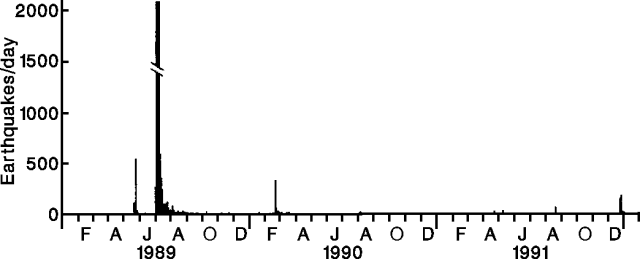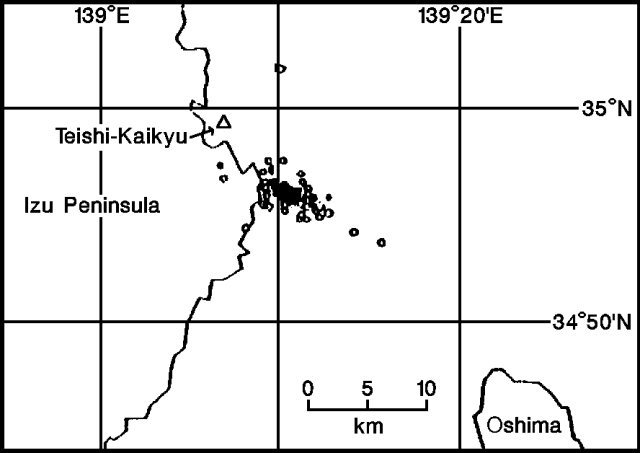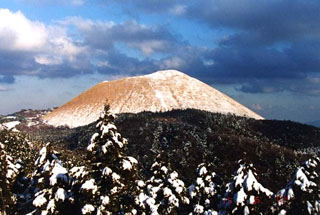Report on Izu-Tobu (Japan) — December 1991
Bulletin of the Global Volcanism Network, vol. 16, no. 12 (December 1991)
Managing Editor: Lindsay McClelland.
Izu-Tobu (Japan) Earthquake swarm
Please cite this report as:
Global Volcanism Program, 1991. Report on Izu-Tobu (Japan) (McClelland, L., ed.). Bulletin of the Global Volcanism Network, 16:12. Smithsonian Institution. https://doi.org/10.5479/si.GVP.BGVN199112-283010
Izu-Tobu
Japan
34.9°N, 139.098°E; summit elev. 1406 m
All times are local (unless otherwise noted)
A seismic swarm, centered ~5 km E of the Izu Peninsula coast at 10-15 km depth, began on 25 December at about 1900 and continued until the 27th (figures 8 and 9). A seismometer (in Izo City) 10 km from the epicentral area recorded about 300 shocks, the largest, M 2.9, on 26 December at 0238 and 0417. Three were felt (at Ajiro Weather Station) 15 km NW of the epicentral area, in the early morning of 26 December. No surface changes were observed.
 |
Figure 8. Daily number of recorded earthquakes in the vicinity of the [Izu-Tobu] volcano group, 1989-91. Seismicity associated with the July 1989 eruption saturated instruments. Courtesy of JMA. |
 |
Figure 9. Epicenters of earthquakes recorded in the vicinity of the [Izu-Tobu] volcano group, 25-27 December 1991. Courtesy of JMA. |
The December swarm was the first in the area since 20-23 August, when a similar hypocenter distribution was observed. Earthquake swarms have been frequent in the area since 1978, but seismicity has been relatively low since the July 1989 submarine eruption of nearby Teishi Kaikyu.
Geological Summary. The Izu-Tobu volcano group (Higashi-Izu volcano group) is scattered over a broad, plateau-like area of more than 400 km2 on the E side of the Izu Peninsula. Construction of several stratovolcanoes continued throughout much of the Pleistocene and overlapped with growth of smaller monogenetic volcanoes beginning about 300,000 years ago. About 70 subaerial monogenetic volcanoes formed during the last 140,000 years, and chemically similar submarine cones are located offshore. These volcanoes are located on a basement of late-Tertiary volcanic rocks and related sediments and on the flanks of three Quaternary stratovolcanoes: Amagi, Tenshi, and Usami. Some eruptive vents are controlled by fissure systems trending NW-SE or NE-SW. Thirteen eruptive episodes have been documented during the past 32,000 years. Kawagodaira maar produced pyroclastic flows during the largest Holocene eruption about 3,000 years ago. The latest eruption occurred in 1989, when a small submarine crater was formed NE of Ito City.
Information Contacts: JMA.

